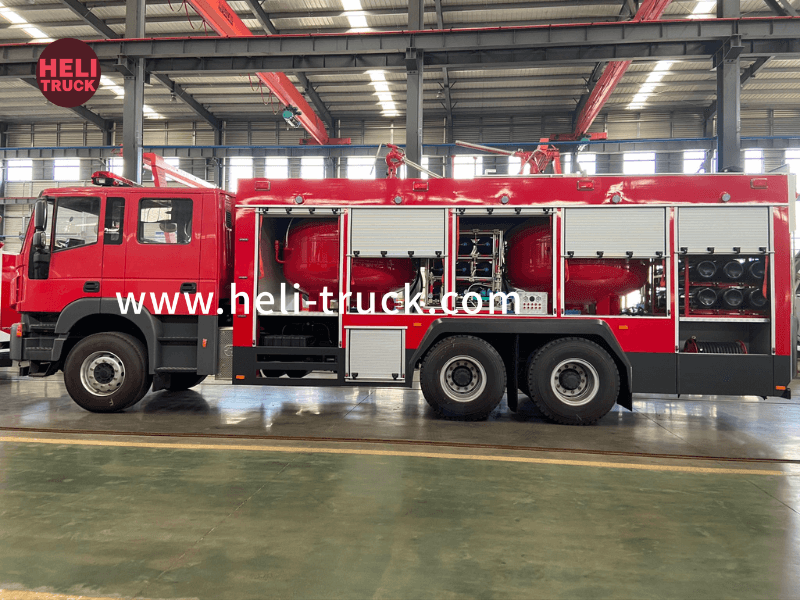Advancing Water Infrastructure Development Through the Use of Water Tank Trucks
Introduction:
Water is essential for human survival and the development of societies. Access to clean and safe water is a basic human right, yet many communities around the world still lack adequate water infrastructure. Water tank trucks play a crucial role in delivering clean water to these underserved areas, especially in times of emergencies or during the construction of permanent water systems. This article explores the importance of water tank trucks in advancing water infrastructure development and the various ways in which they contribute to ensuring access to safe water for all.
Overview of Water Tank Trucks:
Water tank trucks, also known as water bowsers or water tankers, are specialized vehicles designed to transport and deliver large quantities of water. These trucks are equipped with tanks of varying capacities, ranging from a few hundred to several thousand gallons, depending on the specific needs of the community or project. Water tank trucks are commonly used in areas where access to clean water is limited or during emergencies such as natural disasters, droughts, or infrastructure failures.
Importance of Water Tank Trucks in Water Infrastructure Development:
1. Emergency Response: Water tank trucks play a crucial role in emergency response situations, providing immediate access to clean water in the aftermath of natural disasters such as hurricanes, earthquakes, or floods. These trucks can quickly deliver water to affected areas where traditional water supply systems may be disrupted or contaminated.
2. Construction Projects: Water tank trucks are essential for providing water to construction sites where permanent water infrastructure is not yet in place. They supply water for various construction activities, including mixing concrete, dust suppression, and site cleaning. This ensures that construction projects can proceed smoothly and on schedule.
3. Temporary Water Supply: In areas where permanent water infrastructure is not available, water tank trucks serve as a temporary solution to provide communities with access to clean water. These trucks can transport water from centralized sources such as rivers, lakes, or treatment plants to remote or underserved areas that do not have piped water systems.
4. Water Distribution in Remote Areas: Water tank trucks are particularly valuable in reaching remote or isolated communities that are not connected to municipal water supplies. They can navigate rough terrain and deliver water to areas where installing permanent water infrastructure may be impractical or cost-prohibitive.
5. Water Quality Control: Water tank trucks are equipped with specialized equipment to ensure the quality and safety of the water they transport. This includes features such as filtration systems, disinfection units, and regular maintenance procedures to prevent contamination and ensure that the water remains potable during transportation.
Challenges and Solutions:
Despite their importance, water tank trucks face several challenges that can hinder their effectiveness in water infrastructure development. Some of these challenges include:
1. Limited Capacity: Water tank trucks have limited storage capacities, which can be insufficient for meeting the water demands of large communities or during prolonged emergencies. To address this challenge, water tank trucks can be used in conjunction with other water supply sources such as water treatment plants or tanker shuttle systems to ensure an adequate supply of water.
2. Maintenance and Operation Costs: Operating and maintaining water tank trucks can be costly, especially in terms of fuel, maintenance, and personnel expenses. To mitigate these costs, governments, NGOs, and private sector organizations can collaborate to share resources and expertise in managing water tank truck fleets efficiently.

3. Accessibility and Logistics: Accessing remote or disaster-affected areas can be challenging for water tank trucks due to poor road conditions, limited infrastructure, or security concerns. Improved Diesel vacuum truck for sale between stakeholders, pre-positioning of water tank trucks in strategic locations, and the use of satellite technology for route planning can help overcome these logistical challenges.
4. Water Quality Monitoring: Ensuring the quality of water transported by tank trucks is essential to prevent waterborne diseases and contamination. Implementing regular water quality testing, training drivers and operators on hygiene practices, and maintaining proper sanitation standards are critical for safeguarding the health of communities served by water tank trucks.
Conclusion:
Water tank trucks are indispensable in advancing water infrastructure development and ensuring access to safe water for communities in need. Their versatility, mobility, and capacity to deliver water to remote or disaster-affected areas make them essential assets in emergency response efforts and construction projects. By addressing challenges such as limited capacity, maintenance costs, accessibility, and water quality monitoring, stakeholders can maximize the effectiveness of water tank trucks in improving water access and quality for all. Continued investment in water tank truck fleets, combined with strategic planning and collaboration among stakeholders, will be key to achieving sustainable water infrastructure development and promoting water security for future generations.